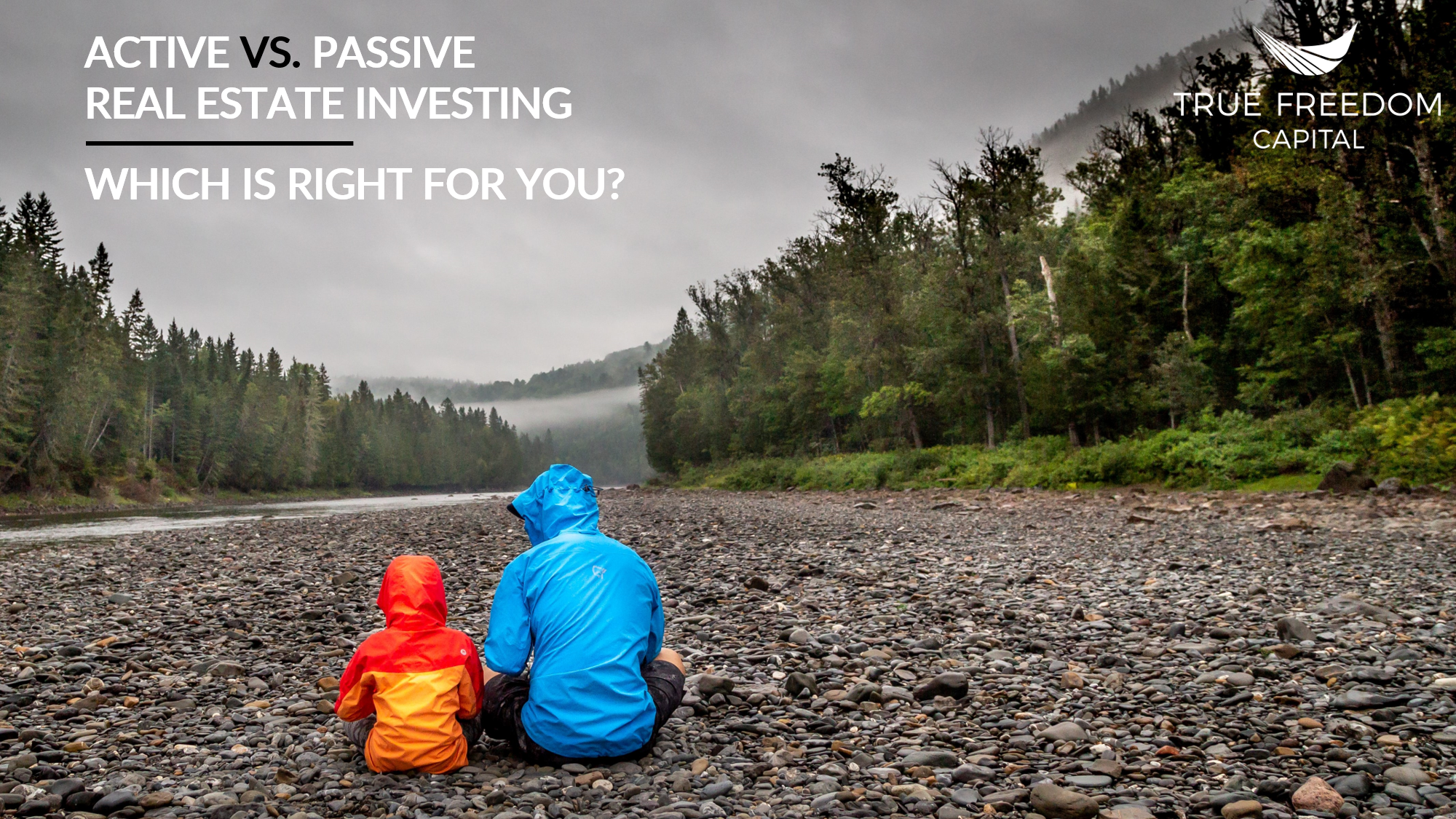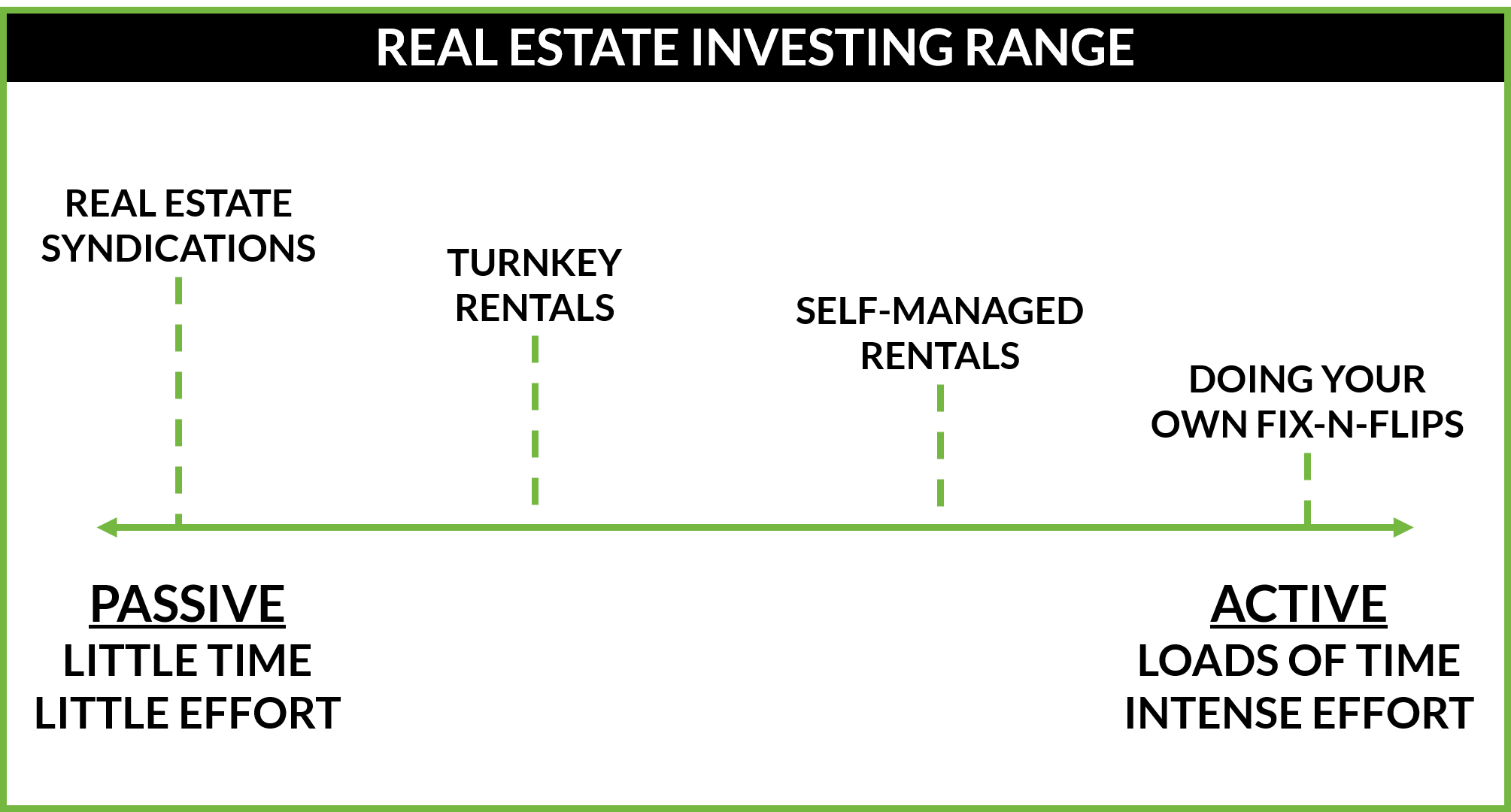
By Joe Firmin 4-Minute Read
Did you know that you could invest in real estate without the headaches of the 3 T’s? Meaning of course – tenants, toilets, and termites? Yep, it’s true – you can get all the benefits of investing in real estate, without any of the hassles of being a landlord. “Lies!” you say? Think not… read on my friend!
In this article, you’ll see what passive real estate investing means and find out if you should be an active or passive investor. Which suits your time limits, personality and, most importantly, your goals.
What It Means To Be An Active Investor
When most people think of real estate investing, they think of investing in single-family rental houses – buy a house, find a renter, and collect monthly rent income. Sounds easy, but the reality can be quite different, especially if you plan to be the carpenter, plumber, landscaper, etc…
Even if you choose to go with a professional property management team on board, you as the landlord still have an active role in the investment.
The property managers may take care of the day-to-day issues that pop up, but you will still need to be involved in strategic decisions, including whether to evict residents who aren’t paying, filing insurance claims when unexpected surprises happen, and sometimes having to put in additional funds to cover maintenance and repair costs.
What It Means To Be A Passive Investor
On the flip side, you have passive investing, which are the “set it and forget it” type of real estate investments. You invest your money, and someone else does all the heavy lifting.
The great part about passive investing is that it’s totally passive – you don’t get any calls from the property manager, you don’t have to screen any residents, and you don’t have to file any evictions. Whew.
However, being a passive investor also means that you relinquish some of your control in the investment and trust someone else (i.e., the sponsor team, operator, general partners) to manage the property and execute on the business plan on your behalf. These types of investments are call real estate syndications. You can read more about them in this post.
Should You Be an Active or Passive Real Estate Investor?
Here are 10 factors to help you decide which path is right for you. When I refer to a “passive investor” in this, it is referring to an investment in a real estate syndication.
#1 – Tenants, Termites, and Toilets
If you’ve dreamt of becoming a landlord, having residents, and making improvements, then consider an active investor role.
Otherwise... if the title to this factor made you nauseous or just made you feel exhausted suddenly - you should go the passive route.
#2 – Time
Active real estate investments consume loads of time, during the initial acquisition and throughout the project lifecycle, while passive investments only require some time up front, during the research phase to vet the investment.
#3 – Involvement
How hands-on do you want to be? Do you want to manage the property yourself, field resident requests, and schedule maintenance and repair appointments? Or do you want to sit back while someone else does all of that? Some people enjoy this management work, some don’t.
#4 – Profits
With active investing, you would likely be the only owner of the property, so you would get to keep all net profits. With passive investing, the profits are distributed among many investors due to the size of properties acquired.
This doesn’t necessarily mean that one type of investment will net you higher returns than the other; you’ll need to compare one deal to another, including the opportunity cost of your time.
#5 – Expenses
Active real estate investors should plan to handle insurance claims, emergencies, and repairs, which may require additional money at times, whereas passive investors only make an initial capital investment.
#6 – Risk and Liability
With active investing, if things go south, you are personally held liable, which means you may lose not just the property but also your other assets. You can of course insulate yourself using an LLC and insurance, but you handle these incidents personally.
With passive investing, your liability is limited to the capital you invest. Typically, the asset is held in an LLC or LP. If anything goes terribly wrong, the sponsors are held liable, not the passive investors.
#7 – Paperwork
Active investments are paperwork-heavy, from the initial purchase of the property to tracking purchase and rental agreements, bookkeeping, and legal documents throughout the project.
With passive real estate investments, on the other hand, you typically sign a single PPM (private placement memorandum) to invest in the property (like a prospectus for your mutual fund investments). No need to fill out lender paperwork, file for insurance, or do any bookkeeping.
#8 – Team
As an active real estate investor, you will need to build your own team, including brokers, property managers, and contractors. Network, network, network and vet different team members.
As a passive investor, you rely on the shared expertise of the existing deal sponsor team. The sponsors are experts in the market and typically already have a team set up to manage the property. Sponsors typically work with experienced partners and team members, which may lower the overall risk of the investment.
#9 – Diversification
With active investing, you yourself would need to be an expert in the market and asset class you’re investing in to ensure you aren’t taking unnecessary risk. If you’re investing outside your local area, you would need to research the market, find a “boots on the ground” team, and possibly visit the area.
With passive investing, it’s easy to diversify across different markets, since you don’t have to start from scratch with each market. You are investing with teams that have already taken the time to research those markets and build strong local teams.
#10 – Taxes
As an active investor, you’ll be responsible for the bookkeeping, meaning that you will need to keep track of the income and expenses. You’ll also need to work with your CPA to make sure that you are properly depreciating the value of the asset each year.
As a passive real estate investor, you don’t need to do any bookkeeping. You receive a Schedule K-1 every spring for your taxes, which shows the income and losses for that property. No need to track income and expenses throughout the year.

Conclusion
If you’re ready to roll up your sleeves and get involved in the various aspects of being a landlord, active investing just might be the perfect adventure for you.
However, if your time is limited but you have capital to invest, you might want to consider being a passive investor.
If you’re hoping for a middle ground option, turnkey rentals may provide some control without the huge time investment, these typically are single-family homes and duplexes.
When determining which is the right path for you, be sure to factor in your unique situation, goals, and interests.
If you’d like to discuss with me, I’d be happy to jump on a call with you. Schedule a call HERE.
If you’re ready to start exploring passive real estate investing, please join our investor network. Once you’re signed up, we can have an introductory call and hopefully move forward.
